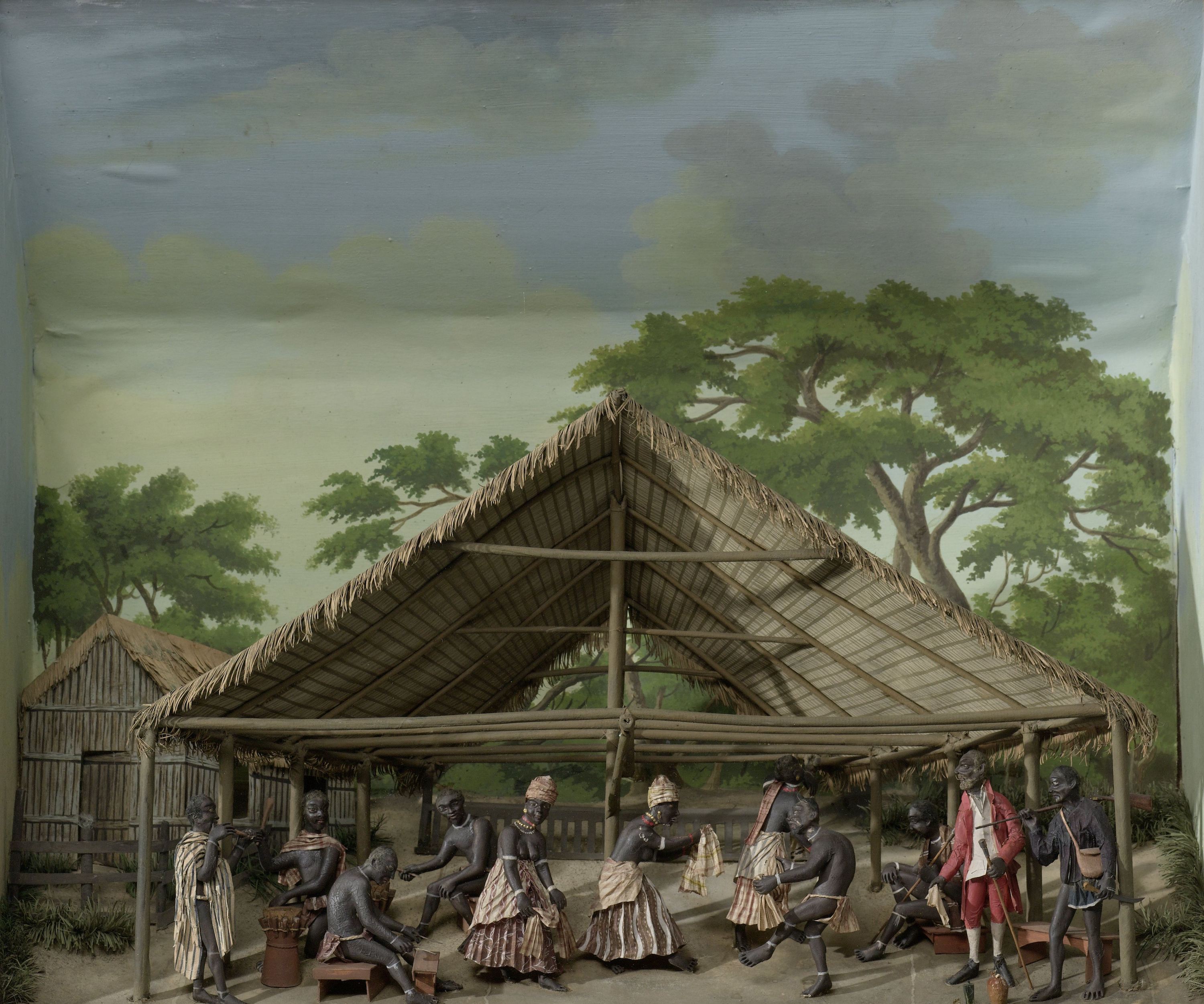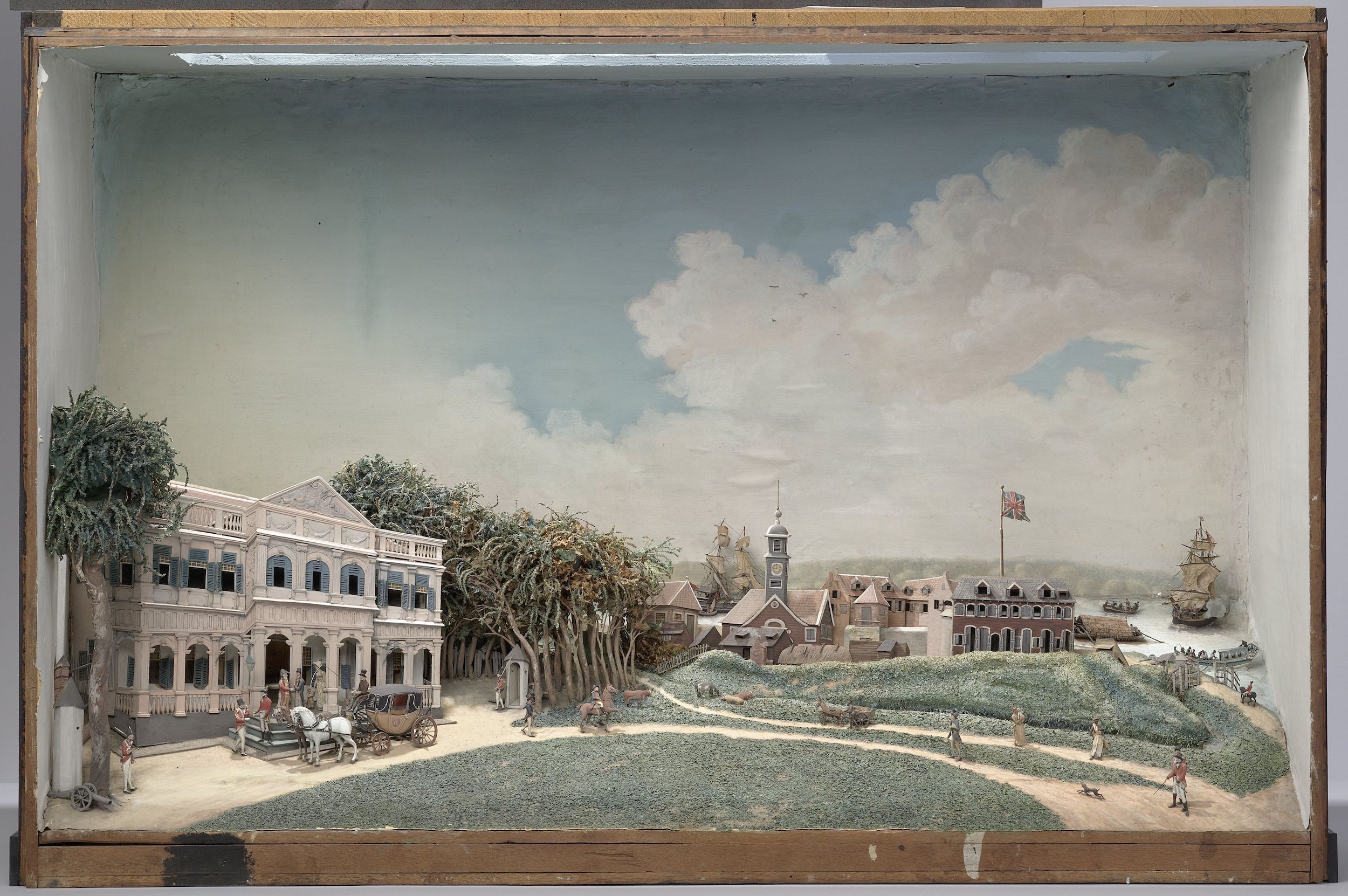Today we present a special item from the Rijksmuseum in Amsterdam. Many of the works in their collection have links to the slavery past. Often, you won’t notice these connections at first glance or find out about them from the museum label. This diorama (a three-dimensional full-size or miniature model) is an example of such work. In the tent we see a du, a type of role play with music and dance that was held on plantations in Suriname, which at the time was the Dutch colony. Both the performers and the audience were people held in slavery. The lead role was reserved for the afrankeri, the narrator (the woman on the far left). The man in the red outfit on the right represents the colonial authority. During the du, the enslaved people could vent criticism of this authority in their own language, Sranan Tongo.
The author of the diorama, Gerrit Schouten, was a Surinamese artist. He was a son of Hendrik Schouten, a Dutch government clerk, and Suzanna Hanssen, a local black woman; he was an autodidact and taught himself how to paint. Schouten was the first Creole working as a professional artist. In 1835, he offered a butterfly painting to William, Prince of Orange, during his visit to Suriname. Later he was awarded a gold medal by the House of Orange for his artwork.
P.S. This extraordinary diorama was featured in the Rijksmuseum's groundbreaking exhibition Slavery.


 Gerrit Schouten
Gerrit Schouten